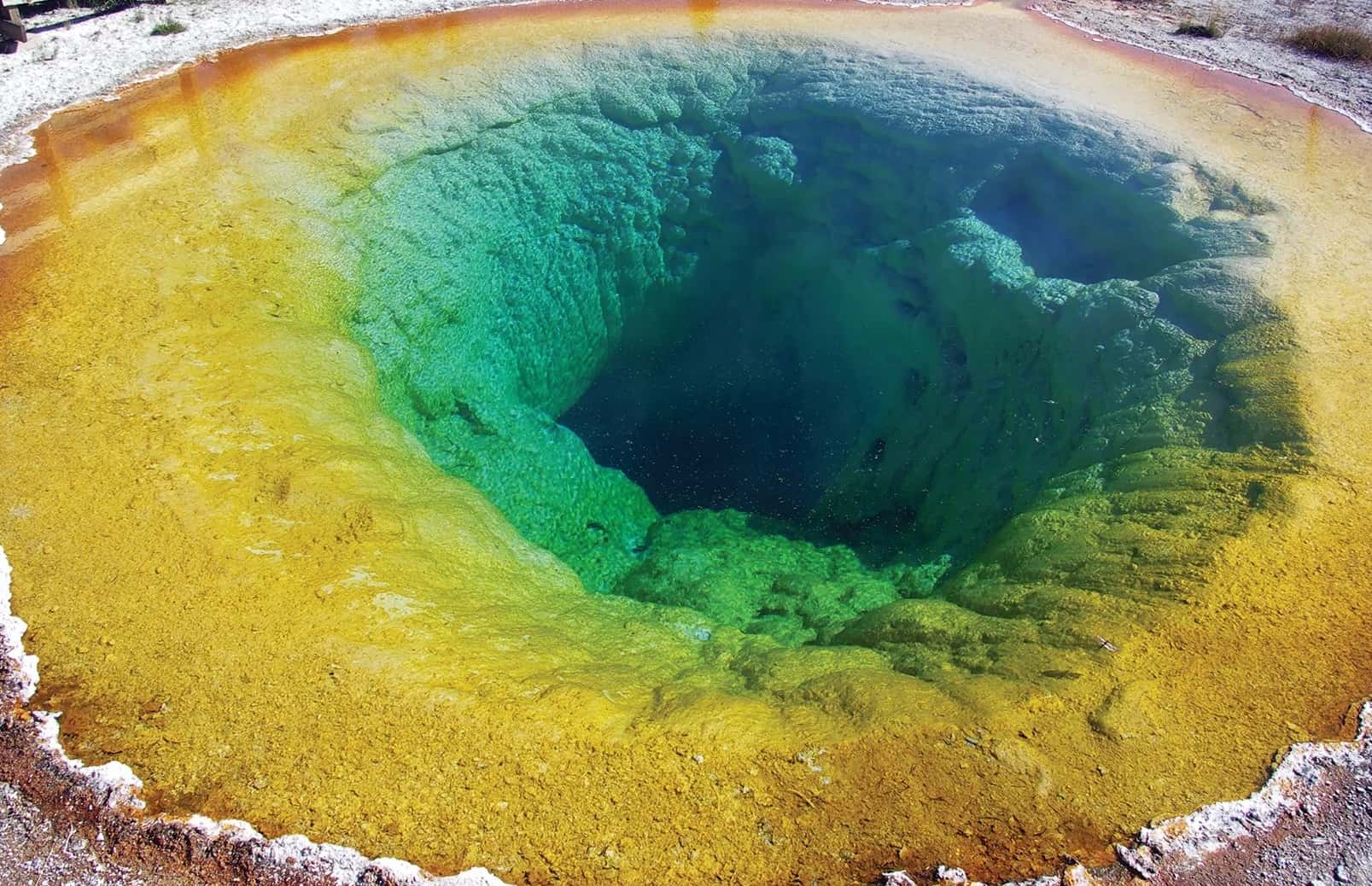
Blue-green algae, also known as cyanobacteria, are a diverse group of photosynthetic bacteria that can be found in various aquatic environments, from freshwater lakes and rivers to marine ecosystems. These remarkable organisms have captured the interest of scientists and nature enthusiasts alike due to their unique characteristics and ecological significance. In this article, we will delve into 19 fascinating facts about blue-green algae, shedding light on their biology, ecological roles, and potential benefits and risks to the environment and human health. From their ancient origins to their ability to thrive in diverse habitats, blue-green algae continue to intrigue and inspire curiosity. Join us on a journey to explore the captivating world of these extraordinary microorganisms and uncover the secrets hidden within their vibrant blue-green hues.
Key Takeaways:
- Blue-green algae, some of the oldest organisms on Earth, play a crucial role in the environment by producing oxygen and serving as a food source for aquatic organisms.
- Blue-green algae have diverse uses, from potential medical applications to soil enrichment and renewable energy, making them a fascinating subject for nature enthusiasts and scientists alike.
Blue-Green Algae Are Among the Oldest Organisms on Earth
Dating back over 3.5 billion years, blue-green algae are some of the oldest known life forms on the planet.
They Play a Crucial Role in the Ecosystem
Blue-green algae are essential for the environment as they contribute to the oxygen production through photosynthesis and serve as a food source for various aquatic organisms.
Blue-Green Algae Can Thrive in Diverse Habitats
These versatile organisms can be found in a wide range of environments, including freshwater lakes, rivers, oceans, and even damp soil.
They Have Unique Pigments
Blue-green algae contain pigments such as chlorophyll a, phycocyanin, and phycoerythrin, which give them their characteristic blue-green color.
Some Species Can Fix Nitrogen
Certain types of blue-green algae have the ability to convert atmospheric nitrogen into a form that can be utilized by other organisms, contributing to the nitrogen cycle.
Blue-Green Algae Can Form Harmful Blooms
Under certain conditions, blue-green algae can undergo rapid growth, leading to the formation of harmful algal blooms that can produce toxins detrimental to aquatic life and human health.
They Have Been Used as a Food Source for Centuries
In some cultures, blue-green algae have been harvested and consumed as a nutrient-rich food source for centuries due to their high protein and nutrient content.
Blue-Green Algae Have Been Studied for Potential Medical Applications
Researchers are exploring the potential health benefits of blue-green algae, including their antioxidant and anti-inflammatory properties, for various medical and nutritional purposes.
They Are a Source of Renewable Energy
Blue-green algae are being investigated as a potential source of biofuel due to their ability to produce lipids that can be converted into biodiesel.
Blue-Green Algae Can Form Symbiotic Relationships
Some species of blue-green algae form symbiotic relationships with fungi, creating composite organisms known as lichens.
They Have Adapted to Extreme Environments
Blue-green algae have demonstrated remarkable adaptability, thriving in extreme environments such as hot springs and polar regions.
Blue-Green Algae Are Used in Soil Enrichment
Certain species of blue-green algae are utilized in agriculture to enhance soil fertility and promote plant growth through nitrogen fixation.
They Have a Unique Reproductive Mechanism
Blue-green algae reproduce through a process called fragmentation, where a portion of the organism breaks off and develops into a new individual.
Blue-Green Algae Are a Source of Bioactive Compounds
These microorganisms produce a variety of bioactive compounds, including toxins, antibiotics, and other secondary metabolites with potential industrial and pharmaceutical applications.
They Have Been Studied for Their Role in Climate Change
Scientists are investigating the role of blue-green algae in carbon sequestration and their potential impact on climate change dynamics.
Blue-Green Algae Have Inspired Art and Culture
The distinctive appearance of blue-green algae has captured the imagination of artists and creators, influencing various forms of art and cultural expressions.
They Are Subject to Ongoing Research and Monitoring
Due to their ecological significance and potential health risks, blue-green algae are the focus of ongoing research and monitoring efforts worldwide.
Blue-Green Algae Are a Testament to the Resilience of Life
The enduring presence of blue-green algae throughout Earth's history serves as a testament to the resilience and adaptability of life in the face of changing environmental conditions.
They Are an Intriguing Subject for Nature Enthusiasts and Scientists Alike
The study of blue-green algae continues to captivate nature enthusiasts and scientists, offering a wealth of opportunities for exploration and discovery in the realm of microbiology and environmental science.
Blue-green algae, with their ancient origins and diverse ecological roles, stand as a testament to the enduring resilience and adaptability of life on Earth. As researchers delve deeper into the complexities of these microorganisms, their potential applications in fields ranging from medicine to renewable energy continue to unfold, underscoring the ongoing relevance of these fascinating organisms in the modern world.
This comprehensive exploration of 19 Blue-Green Algae Facts sheds light on the multifaceted nature of these ancient microorganisms, inviting us to appreciate their ecological significance and the myriad ways in which they intersect with human endeavors and the natural world.
Conclusion
In conclusion, blue-green algae, also known as cyanobacteria, are fascinating organisms with a rich history and significant ecological importance. From their role as primary producers in aquatic ecosystems to their potential applications in various industries, these ancient microorganisms continue to captivate scientists and nature enthusiasts alike. As we strive to understand and harness the potential of blue-green algae, it's crucial to appreciate their complex biology and the delicate balance they maintain in our environment. By raising awareness about their benefits and challenges, we can work towards sustainable coexistence with these remarkable organisms.
FAQs
What are the main characteristics of blue-green algae?Blue-green algae, or cyanobacteria, are a diverse group of photosynthetic bacteria that thrive in various aquatic environments. They are characterized by their bluish-green pigmentation, which is due to the presence of chlorophyll a and phycocyanin.
Are all blue-green algae harmful?While some species of blue-green algae can produce toxins under certain conditions, not all are harmful. It's essential to monitor water bodies for potential harmful algal blooms and take necessary precautions to ensure safe recreational and drinking water sources.
Blue-green algae, also known as cyanobacteria, are truly remarkable organisms that have captured the attention of scientists and nature lovers alike. Their incredible resilience, ecological importance, and potential applications make them a subject worth exploring further. If you found these blue-green algae facts intriguing, you might also enjoy learning more about the fascinating world of cyanobacteria and their role in shaping our planet's history and future.
Was this page helpful?
Our commitment to delivering trustworthy and engaging content is at the heart of what we do. Each fact on our site is contributed by real users like you, bringing a wealth of diverse insights and information. To ensure the highest standards of accuracy and reliability, our dedicated editors meticulously review each submission. This process guarantees that the facts we share are not only fascinating but also credible. Trust in our commitment to quality and authenticity as you explore and learn with us.


